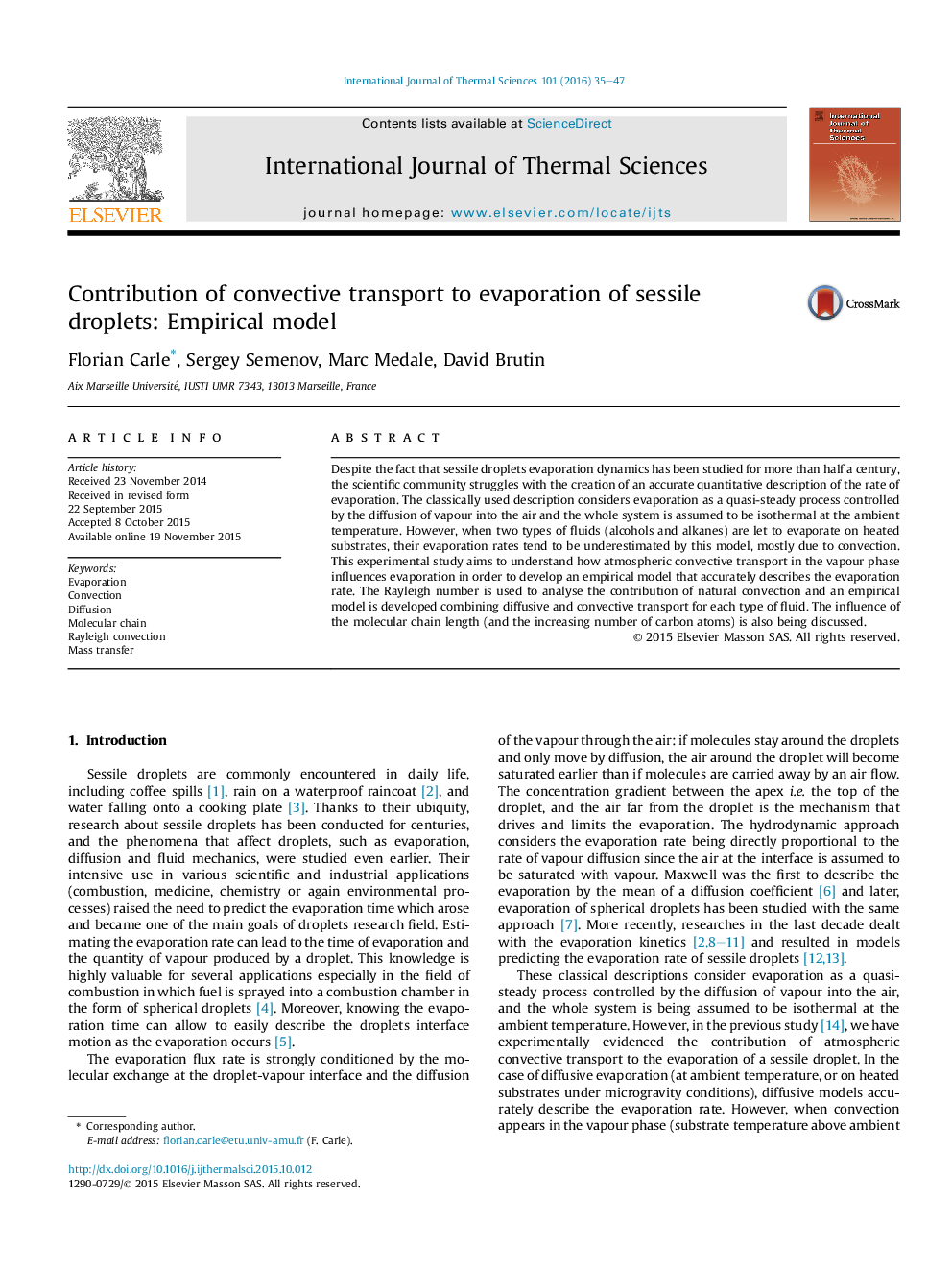| Article ID | Journal | Published Year | Pages | File Type |
|---|---|---|---|---|
| 668466 | International Journal of Thermal Sciences | 2016 | 13 Pages |
•Alcohols and alkanes sessiles droplets were evaporated onto heated substrates.•Microgravity experiments evidenced contribution of the convection on evaporation.•An empirical model was developed to take into account atmospheric convection.•Good agreements between model and thirteen different fluids.
Despite the fact that sessile droplets evaporation dynamics has been studied for more than half a century, the scientific community struggles with the creation of an accurate quantitative description of the rate of evaporation. The classically used description considers evaporation as a quasi-steady process controlled by the diffusion of vapour into the air and the whole system is assumed to be isothermal at the ambient temperature. However, when two types of fluids (alcohols and alkanes) are let to evaporate on heated substrates, their evaporation rates tend to be underestimated by this model, mostly due to convection. This experimental study aims to understand how atmospheric convective transport in the vapour phase influences evaporation in order to develop an empirical model that accurately describes the evaporation rate. The Rayleigh number is used to analyse the contribution of natural convection and an empirical model is developed combining diffusive and convective transport for each type of fluid. The influence of the molecular chain length (and the increasing number of carbon atoms) is also being discussed.
Graphical abstractFigure optionsDownload full-size imageDownload as PowerPoint slide
